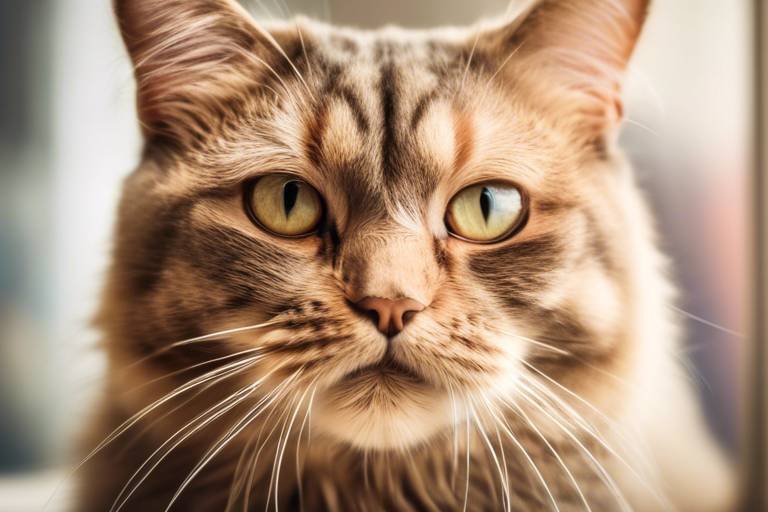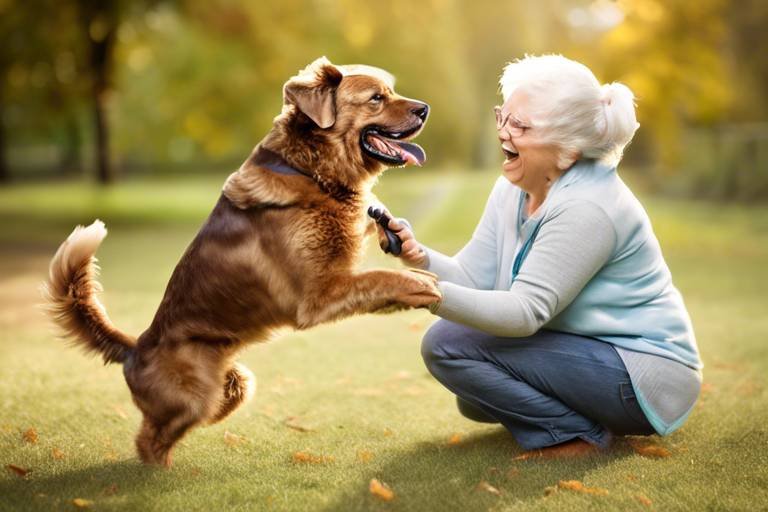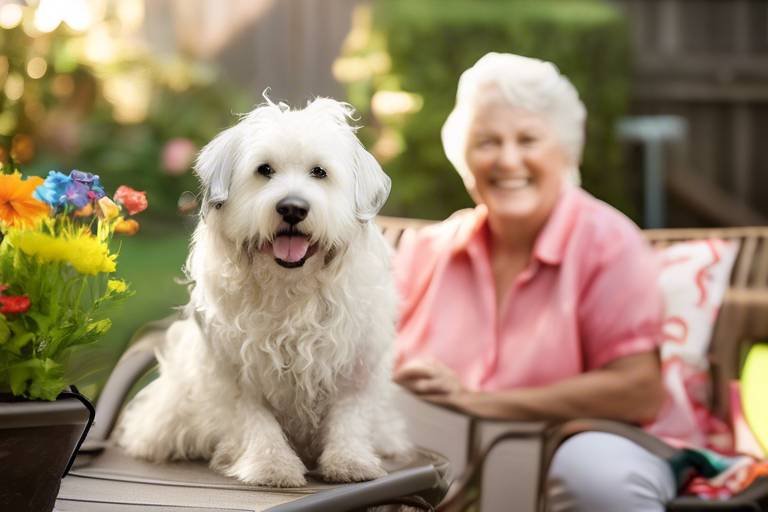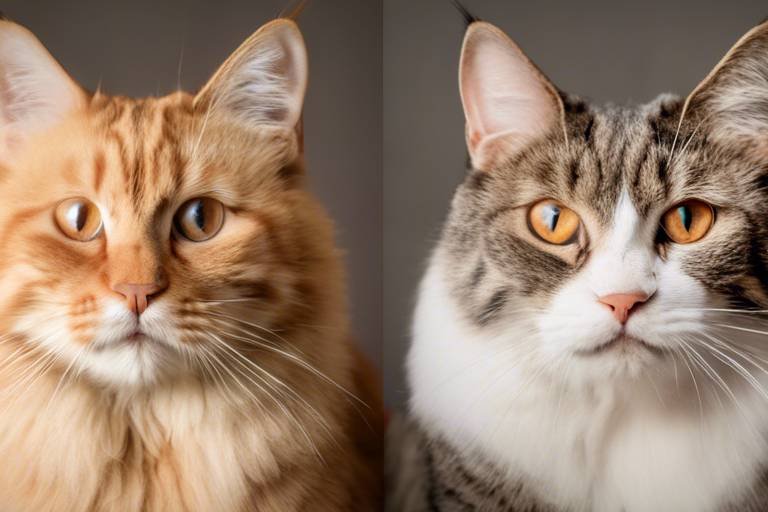Understanding Changes in Senior Cat Behavior
As our feline friends gracefully age, their behavior often transforms in ways that can be both surprising and concerning for their human companions. Just like us, cats undergo a myriad of changes as they enter their senior years, and understanding these shifts is vital for providing the best care possible. Imagine your once playful kitty now opting for a cozy nap in the sun instead of chasing after that elusive feather toy. This transition isn't just about getting older; it’s about adapting to new physical and mental challenges that come with age.
Senior cats may find themselves sleeping more, which can be alarming for owners who remember their cat's youthful energy. It’s not uncommon for them to snooze up to 18 hours a day! This increased sleep can be attributed to a variety of factors, including decreased energy levels and the need for more rest to cope with age-related health issues. But don’t fret—this is a natural part of the aging process. However, it’s essential to keep an eye on their activity levels, as a sudden change might indicate underlying health concerns.
Another notable change is in their eating habits. You might notice your senior cat being less enthusiastic about their meals or, conversely, becoming a bit more demanding when it comes to food. This can stem from dental issues, a decrease in sense of smell, or even cognitive changes. Owners should remain vigilant and consult with a veterinarian if they notice any drastic changes in appetite. After all, nutrition plays a crucial role in maintaining their health and vitality.
With age, many cats also experience decreased activity levels. You may find that your once sprightly companion prefers to lounge rather than leap. This shift can be linked to various factors, including arthritis or other joint issues that make movement uncomfortable. It’s important to provide gentle encouragement to keep them active without pushing them too hard. Think of it as a gentle stroll in the park instead of a sprint—both can be enjoyable, but one is certainly more suited to their current abilities.
Understanding these behavioral changes is not just about recognizing them; it’s about adapting our care routines to meet the evolving needs of our senior cats. By being attentive and responsive to these changes, we can enhance their quality of life and ensure they remain happy and healthy companions well into their golden years.
As cats age, they often exhibit changes in behavior, including increased sleep, altered eating habits, and decreased activity levels. Understanding these changes can help owners provide better care.
Various health issues can influence a senior cat's behavior. Conditions such as arthritis, dental disease, and cognitive dysfunction can lead to noticeable changes that require attention and care.
Cats are adept at hiding pain, but senior cats may display subtle signs of discomfort. Recognizing these signs is crucial for timely intervention and improved quality of life.
Senior cats may groom less frequently or neglect grooming altogether, leading to matted fur and skin issues. Understanding this change can help owners assist their cats in maintaining hygiene.
A senior cat may become more vocal due to confusion, discomfort, or a desire for attention. Identifying the reasons behind increased vocalization can help owners respond appropriately.
Cognitive dysfunction syndrome (CDS) can affect senior cats, leading to confusion, disorientation, or changes in sleeping patterns. Recognizing these signs can help owners seek appropriate treatment.
Making modifications to a senior cat’s environment can significantly improve their comfort and well-being. Simple changes can enhance their quality of life and reduce stress.
Creating cozy resting areas with soft bedding can help senior cats feel secure and comfortable. These spaces should be easily accessible to accommodate their mobility challenges.
Placing food, water, and litter boxes in easily accessible locations can minimize stress for senior cats. Consider their mobility limitations when arranging their living space.
- What are the common signs of aging in cats? Senior cats may show signs such as increased sleep, changes in appetite, decreased activity, and altered grooming habits.
- How can I help my senior cat stay healthy? Regular veterinary check-ups, a balanced diet, and gentle exercise can help maintain your cat's health.
- When should I be concerned about my cat's behavior? If you notice sudden changes in behavior, appetite, or grooming habits, it's essential to consult your veterinarian.
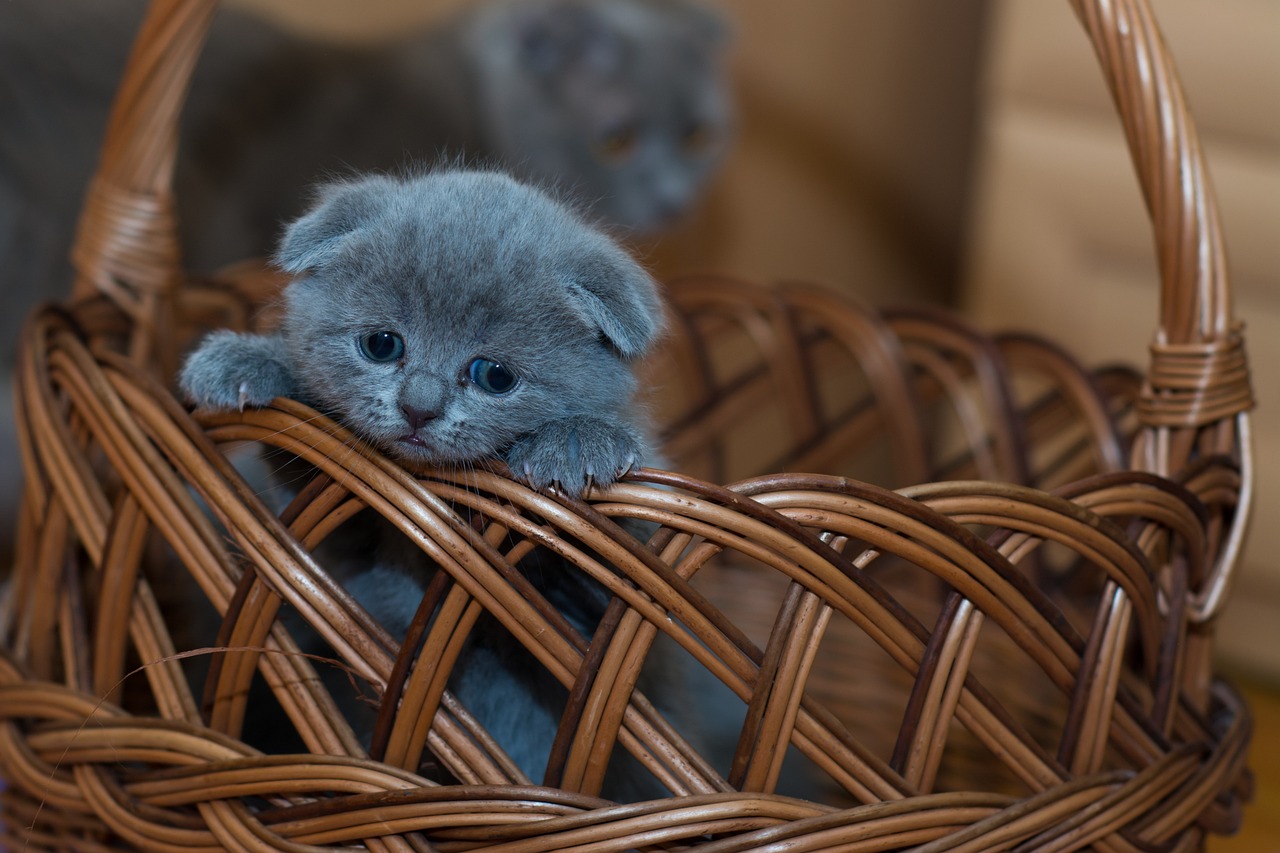
Common Behavioral Changes
This article explores the various behavioral changes that senior cats experience, helping owners understand and adapt to their feline companions' needs as they age.
As our beloved feline friends age, it's not uncommon to observe some noticeable changes in their behavior. Just like us, cats go through various stages of life, and with those stages come shifts in how they interact with their environment and with us. You might find that your once playful kitty is now spending more time napping in the sun, or perhaps they seem less interested in their favorite toys. These changes can be attributed to a variety of factors, including physical health, mental state, and even environmental influences.
One of the most common behavioral changes in senior cats is an increase in sleeping hours. While younger cats might bounce around the house with boundless energy, older cats often prefer the comfort of their favorite sleeping spots. It’s not unusual for a senior cat to sleep up to 20 hours a day! This extended rest is a natural part of aging, but it can sometimes lead to concerns about their overall health and activity levels.
Alongside increased sleep, you may notice altered eating habits. Some senior cats may lose interest in their food, while others may become more ravenous. This shift can be linked to dental issues, changes in taste perception, or even underlying health conditions. It's essential to keep an eye on their eating patterns. If you notice significant changes, it might be time for a trip to the vet.
Another behavior that often changes is their activity level. Senior cats may become less inclined to jump, run, or engage in play. This decrease in activity can be attributed to arthritis or other age-related ailments that make movement uncomfortable. As a loving cat owner, it’s vital to adapt your playtime activities to suit their energy levels. Gentle interactive games or puzzle feeders can keep their minds sharp without overexerting them.
In addition to these changes, senior cats may also exhibit changes in their social behavior. Some cats become more affectionate, seeking out companionship more often, while others may retreat and prefer solitude. This change can be perplexing, especially if your cat was once the life of the party. Understanding that these shifts are part of the aging process can help you provide the right kind of support and companionship.
To summarize, here are some common behavioral changes you might observe in your senior cat:
- Increased sleep duration
- Altered eating habits
- Decreased activity levels
- Changes in social behavior
Recognizing these behavioral changes is crucial for providing the best care possible. By understanding what your senior cat is going through, you can adjust their environment and routines to ensure they remain happy and comfortable in their golden years. Remember, every cat is unique, and while some changes are typical, others may warrant a closer look to rule out any health issues.
Various health issues can influence a senior cat's behavior. Conditions such as arthritis, dental disease, and cognitive dysfunction can lead to noticeable changes that require attention and care.
Cats are adept at hiding pain, but senior cats may display subtle signs of discomfort. Recognizing these signs is crucial for timely intervention and improved quality of life.
Senior cats may groom less frequently or neglect grooming altogether, leading to matted fur and skin issues. Understanding this change can help owners assist their cats in maintaining hygiene.
A senior cat may become more vocal due to confusion, discomfort, or a desire for attention. Identifying the reasons behind increased vocalization can help owners respond appropriately.
Cognitive dysfunction syndrome (CDS) can affect senior cats, leading to confusion, disorientation, or changes in sleeping patterns. Recognizing these signs can help owners seek appropriate treatment.
Making modifications to a senior cat’s environment can significantly improve their comfort and well-being. Simple changes can enhance their quality of life and reduce stress.
Creating cozy resting areas with soft bedding can help senior cats feel secure and comfortable. These spaces should be easily accessible to accommodate their mobility challenges.
Placing food, water, and litter boxes in easily accessible locations can minimize stress for senior cats. Consider their mobility limitations when arranging their living space.
Q: How can I tell if my senior cat is in pain?
A: Look for signs such as changes in grooming habits, decreased appetite, increased vocalization, or changes in their usual behavior.
Q: Should I change my senior cat's diet?
A: Yes, consult your veterinarian for dietary recommendations tailored to your senior cat's specific health needs.
Q: How can I help my senior cat stay active?
A: Engage them in gentle play and provide interactive toys that stimulate their mind without overexerting them.
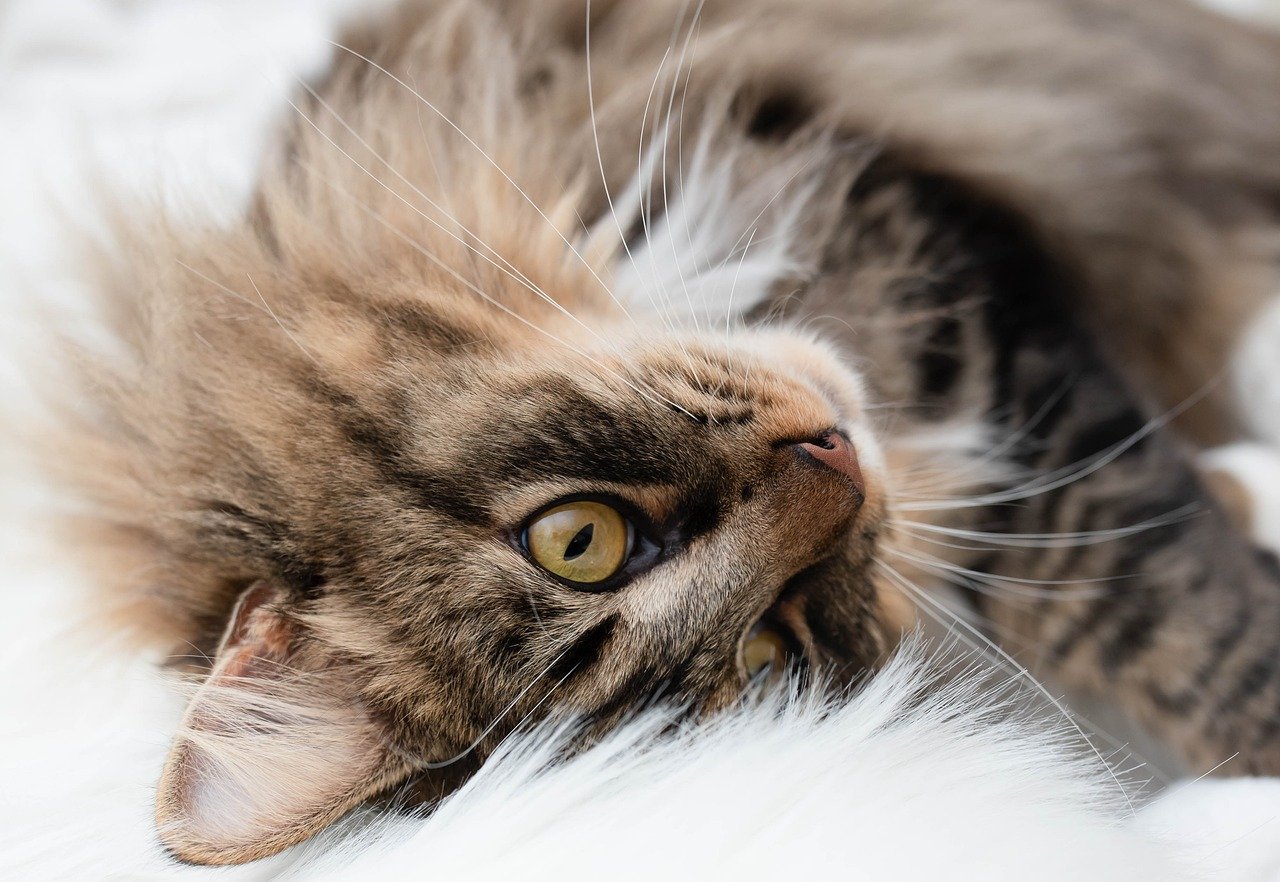
Health Issues Impacting Behavior
As our feline friends age, they may face various health issues that significantly impact their behavior. It's essential for cat owners to be aware of these potential problems, as understanding them can lead to better care and a more comfortable life for our senior companions. Common health conditions in older cats include arthritis, dental disease, and cognitive dysfunction syndrome (CDS). Each of these conditions can lead to noticeable changes in how a cat behaves, interacts, and copes with their environment.
For instance, arthritis is a painful condition that affects the joints, making movement difficult and uncomfortable. A cat suffering from arthritis may become less active, preferring to lounge around rather than engage in play or exploration. This decreased activity can lead to weight gain, further complicating their health. If you notice your cat is hesitant to jump or climb, it might be time for a vet visit to discuss pain management options.
Dental disease is another common issue in senior cats. As they age, their teeth may develop tartar buildup, leading to gum disease and tooth loss. This can make eating painful and cause changes in eating habits, such as reluctance to eat hard food or a sudden preference for softer options. If your cat starts to avoid their usual meals or seems to be eating less, it's crucial to check their mouth for signs of dental issues. Regular veterinary dental check-ups can help catch these problems early.
Additionally, cognitive dysfunction syndrome (CDS) can lead to confusion and disorientation in senior cats, similar to dementia in humans. Cats with CDS may exhibit changes in their sleeping patterns, increased vocalization, or even forget where their litter box is located. If you notice your cat wandering aimlessly or staring at walls, it could be a sign that they are struggling with cognitive decline. Keeping their environment familiar and providing mental stimulation through interactive toys can help manage these symptoms.
Recognizing the signs of these health issues is crucial for timely intervention. For example, if your senior cat is displaying any of the following behaviors, it may be time to consult your veterinarian:
- Reluctance to move or play
- Changes in eating or drinking habits
- Increased vocalization or confusion
- Neglecting grooming
- Changes in litter box habits
By being vigilant and proactive, you can help ensure that your senior cat receives the necessary care to manage these health issues effectively. Regular veterinary check-ups are essential to monitor your cat's health and address any emerging concerns. Remember, your cat relies on you to understand their needs, especially as they age.
- What are the signs that my senior cat may be in pain?
Signs of pain in senior cats can include decreased activity, reluctance to be touched, changes in grooming habits, and altered eating behaviors. If you notice any of these signs, consult your veterinarian.
- How can I help my senior cat with arthritis?
Providing soft bedding, maintaining a healthy weight, and discussing pain management options with your vet can help your cat cope with arthritis. Regular gentle exercise is also beneficial.
- What should I do if my cat is vocalizing more than usual?
Increased vocalization can indicate discomfort, confusion, or a need for attention. Observe your cat's behavior and consult your veterinarian to rule out any health issues.
Signs of Pain or Discomfort
As a cat owner, you might think you know your furry friend inside and out, but did you know that senior cats can be masters at hiding their pain? It's almost like they have a secret code for discomfort that only the most observant pet parents can decipher. As our feline companions age, they may experience various aches and pains, and recognizing these signs early can be crucial for their overall health and happiness. So, what should you be looking for?
One of the most common indicators of pain in senior cats is a change in their usual behavior. Have you noticed your cat being less playful or more withdrawn than usual? This could be a sign that they're not feeling their best. Additionally, if your once-active cat suddenly prefers to lounge around all day, it might be time to investigate further. Also, pay attention to their grooming habits. If your cat is neglecting their grooming, resulting in a scruffy or matted coat, it could indicate that they're experiencing discomfort or pain.
Another subtle yet significant sign of pain is changes in their eating habits. If your cat is suddenly less interested in their food or has begun to eat less than usual, this could be a red flag. Cats may avoid eating because it hurts to chew, especially if they have dental issues or other oral pain. Similarly, watch for changes in their litter box habits. If your cat is straining to urinate or defecate, or if they seem to be avoiding the litter box altogether, it could be a sign of pain or discomfort that needs immediate attention.
Moreover, vocalization can also be a key indicator of pain. If your cat has started meowing more frequently or in a different tone, they might be trying to tell you something is wrong. This increased vocalization can stem from confusion, discomfort, or simply a desire for your attention. Remember, while some cats are naturally more vocal than others, any sudden changes in their vocal patterns should not be ignored.
Here are some other signs to keep an eye on:
- Changes in sleeping patterns: Is your cat sleeping more than usual, or do they seem restless at night?
- Behavioral changes: Are they more irritable or aggressive than they used to be?
- Altered mobility: Are they having trouble jumping onto their favorite spots or walking normally?
Understanding these signs can help you provide the necessary care and comfort for your senior cat. If you notice any of these changes, don't hesitate to consult your veterinarian. They can help determine the underlying cause of your cat's discomfort and recommend appropriate treatments to improve their quality of life.
Q: How can I tell if my senior cat is in pain?
A: Look for changes in behavior, grooming habits, eating, and vocalization. Signs like increased withdrawal, changes in litter box habits, and altered mobility can also indicate pain.
Q: Should I take my cat to the vet if I suspect they are in pain?
A: Yes! It's always best to consult with a veterinarian if you suspect your cat is in pain. They can provide a proper diagnosis and treatment options.
Q: Are there specific health issues that cause pain in senior cats?
A: Yes, conditions such as arthritis, dental disease, or injuries can lead to pain and discomfort in senior cats.
Q: What can I do to help my senior cat feel more comfortable?
A: Provide a comfortable environment, ensure easy access to food and litter boxes, and consult your vet for potential pain management options.
Changes in Grooming Habits
As our feline friends age, one of the most noticeable changes we may observe is in their grooming habits. Just like how we might slow down a bit as we grow older, senior cats often exhibit a decline in their grooming frequency and thoroughness. This change can be attributed to several factors, including physical limitations, discomfort, or even cognitive decline. Imagine how challenging it can be for an elderly person to bend down and tie their shoes; similarly, older cats may find it difficult to reach all parts of their bodies for grooming.
Grooming is not just a matter of aesthetics for cats; it's crucial for their health and well-being. Regular grooming helps to remove loose fur, dirt, and debris, and it also plays a significant role in preventing matting and skin issues. When senior cats neglect their grooming, it can lead to a variety of problems, including:
- Matted Fur: This can become uncomfortable and even painful, as mats can pull on the skin.
- Skin Infections: Lack of grooming can lead to dirt and bacteria buildup, increasing the risk of infections.
- Overheating: Cats rely on their fur to regulate body temperature, and matted fur can hinder this process.
To help your senior cat maintain their hygiene, it's essential to step in and assist them with grooming. Regular brushing not only helps keep their coat in good condition but also provides an opportunity for bonding. Consider using a soft brush to gently remove loose fur and check for any skin issues. If your cat is particularly resistant or uncomfortable, try to make grooming a positive experience by offering treats or gentle praise.
Additionally, it's important to monitor your cat's overall health. If you notice significant changes in their grooming habits, it could be a sign of underlying health issues. Conditions such as arthritis may make it difficult for them to groom themselves properly, while dental issues could cause discomfort that leads to a lack of grooming enthusiasm. Always consult with your veterinarian if you have concerns about your senior cat's grooming habits or overall well-being.
Increased Vocalization
Have you noticed that your once-quiet feline friend has started to fill your home with a chorus of meows and yowls? Well, you're not alone! Many cat owners experience this change as their furry companions age. Increased vocalization in senior cats can be attributed to a variety of factors, and understanding these can help you respond appropriately to your beloved pet's needs.
One of the primary reasons for this increase in vocalization is confusion. As cats age, they may experience cognitive dysfunction syndrome (CDS), similar to dementia in humans. This condition can lead to disorientation, causing your cat to vocalize more frequently in an attempt to communicate their confusion or distress. Imagine waking up in a strange place and not knowing how you got there; that’s how your cat might feel, and vocalizing is their way of seeking reassurance.
Another factor contributing to increased vocalization is discomfort or pain. Senior cats may suffer from various health issues, such as arthritis or dental problems, which can lead to a decrease in their overall well-being. If your cat is vocalizing more than usual, it’s essential to consider whether they might be in pain. Pay attention to their body language and overall behavior; if they seem restless or are avoiding certain activities, it might be time to consult your veterinarian.
Additionally, some senior cats may simply crave more attention as they age. Just like humans, cats can become more needy as they grow older. They might start vocalizing to get your attention, whether it’s for petting, playtime, or just to be near you. It’s important to spend quality time with your senior cat, as this can help alleviate their anxiety and strengthen your bond.
To better understand the reasons behind your cat’s increased vocalization, consider keeping a journal of their behavior. Note the times they vocalize, the context, and any accompanying behaviors. This information can be invaluable when discussing your concerns with a veterinarian. Here’s a simple table you can use to track your cat’s vocalization patterns:
| Date | Time | Context | Behavior |
|---|---|---|---|
| MM/DD/YYYY | HH:MM | Feeding time | Restless, pacing |
| MM/DD/YYYY | HH:MM | Playtime | Seeking attention |
In conclusion, while increased vocalization in senior cats can be concerning, it’s essential to approach the situation with understanding and compassion. Monitor your cat’s behavior closely, and don’t hesitate to seek veterinary advice if you notice any alarming signs. Remember, your cat’s vocalizations are their way of communicating their needs, and being attentive to those signals can lead to a happier and healthier life for both of you.
- Why is my senior cat meowing more than usual? Increased vocalization can be due to confusion, discomfort, or a desire for attention.
- How can I help my cat if they are vocalizing due to pain? Consult your veterinarian for a thorough examination and appropriate treatment options.
- Is increased vocalization a sign of cognitive dysfunction? It can be one of the signs, but it’s important to consider other factors as well.
- What can I do to comfort my vocal senior cat? Spend quality time with them, create a comfortable environment, and ensure they have access to all their needs.
Cognitive Changes in Aging Cats
As our beloved feline companions grow older, they may experience a range of cognitive changes that can affect their daily lives. One of the most significant conditions that can arise is Cognitive Dysfunction Syndrome (CDS), which is akin to dementia in humans. Imagine waking up one day and not recognizing your surroundings or forgetting where you placed your favorite toy; this is often how senior cats feel as they navigate their world. The effects of CDS can manifest in various ways, and being aware of these signs can help owners provide the necessary support and care.
Common indicators of cognitive decline in senior cats include disorientation, where they may seem lost in familiar spaces, or they might forget their usual routines, such as meal times or litter box locations. Additionally, you may notice changes in their sleeping patterns. While younger cats tend to sleep soundly, older cats may experience disrupted sleep, leading to increased nighttime activity. This change can be puzzling and sometimes frustrating for both the cat and the owner.
Another sign of cognitive changes is a decrease in interaction with their human companions. Cats that once eagerly greeted you at the door may become more reclusive, seeking solitude rather than companionship. This shift can be heartbreaking, as it feels like a part of their personality is fading away. However, it’s essential to remember that these changes are not a reflection of your cat's love for you but rather a symptom of their cognitive struggles.
In some cases, senior cats may also exhibit increased vocalization, often meowing or yowling more than usual. This behavior can be attributed to confusion or a longing for attention, as they may not fully understand why they feel different. Owners should take note of these vocalizations and respond with gentle reassurance, providing a sense of security and comfort.
To help manage these cognitive changes, it's vital to create a stimulating environment. Engaging your cat with interactive toys, puzzle feeders, or even simple games can help keep their mind sharp. Regularly introducing new experiences can also provide mental stimulation that may slow down cognitive decline. Furthermore, maintaining a consistent routine can help reduce confusion and anxiety. Cats thrive on predictability, so keeping feeding times and play sessions regular can provide a sense of stability in their lives.
In conclusion, understanding the cognitive changes that occur in aging cats is crucial for their well-being. By recognizing the signs of Cognitive Dysfunction Syndrome and making adjustments to their environment and routine, owners can help their senior cats navigate this challenging stage of life with dignity and love. Remember, your furry friend may be aging, but with the right support, they can continue to enjoy a fulfilling life.
- What are the early signs of cognitive dysfunction in cats? Early signs may include disorientation, changes in routine, and increased vocalization.
- Can cognitive dysfunction be treated? While there is no cure, certain treatments and environmental adjustments can help manage symptoms.
- How can I support my aging cat? Providing mental stimulation, maintaining a consistent routine, and ensuring a comfortable environment are key ways to support your senior cat.

Environmental Adjustments
As our beloved feline friends age, adapting their environment becomes crucial for their comfort and well-being. Just like we might rearrange our homes to accommodate a new lifestyle, senior cats benefit immensely from thoughtful adjustments in their surroundings. Imagine trying to navigate a maze with limited mobility; it can be frustrating and stressful. Therefore, creating a space that is easy to navigate can significantly enhance their quality of life.
One of the simplest yet most effective changes you can make is to provide comfortable spaces. Senior cats often seek out cozy resting spots where they can curl up and feel secure. Consider investing in soft bedding, such as plush blankets or cushioned cat beds, which can help them relax. These resting areas should be strategically placed in quiet corners of your home, away from the hustle and bustle, to give your cat a peaceful retreat. Accessibility is key; choose locations that are easy for them to reach without straining themselves.
Moreover, ensuring that essential resources are readily available can minimize stress for your senior cat. This includes food, water, and litter boxes. It's important to place these items in locations that are easily accessible, especially if your cat has mobility issues. For instance, if your cat struggles with stairs, consider having a litter box on the same floor where they spend most of their time. This small adjustment can prevent accidents and help maintain their hygiene.
Additionally, think about the layout of your living space. If your cat has become less active, try to keep their favorite toys and scratching posts within easy reach. You might also want to reduce the number of obstacles in their path. A clutter-free environment not only makes it easier for them to move around but also reduces the risk of injury. By creating a safe and welcoming environment, you can help your senior cat feel more at ease as they navigate their golden years.
Finally, consider adding vertical space with cat trees or shelves that are easy to access. Cats love to perch up high, and providing them with safe access to these areas can stimulate their natural instincts while also giving them a sense of security. Just as we seek out our favorite spots in a home, your senior cat will appreciate having options that cater to their needs.
- What are the signs that my senior cat needs environmental adjustments? Look for signs of discomfort, difficulty accessing resources, or changes in behavior such as increased hiding or vocalization.
- How can I make my home more accessible for my senior cat? Ensure food, water, and litter boxes are on the same floor and free from obstacles. Soft bedding and cozy spots can also help.
- Should I provide more vertical space for my senior cat? Yes, providing safe access to vertical spaces can stimulate their instincts and offer them a sense of security.
Providing Comfortable Spaces
Creating a cozy and inviting environment for your senior cat is essential as they navigate the later stages of their life. Just like us, cats thrive in spaces that feel safe and comfortable. Imagine how you feel after curling up in your favorite chair with a warm blanket; that’s the kind of comfort we want for our feline friends! By providing them with designated areas where they can relax and feel secure, we can significantly enhance their quality of life.
One of the best ways to ensure your senior cat feels at home is by setting up comfortable resting areas. These spaces should be equipped with soft bedding that offers support for their aging joints. Think about using materials like fleece or memory foam, which can provide extra cushioning. Place these cozy spots in quiet corners of your home, away from the hustle and bustle, so your cat can enjoy peaceful naps without interruptions. Remember, a stressed cat is often an unhappy cat, and a little thoughtfulness in their resting areas can go a long way!
Accessibility is key when it comes to these comfortable spaces. Older cats may struggle with mobility due to arthritis or other health issues, so it's important to choose locations that are easy for them to reach. For instance, avoid placing their favorite bed on a high shelf or in a cramped space. Instead, consider using low, wide containers that they can easily step into. Additionally, if your cat has a favorite sunny spot by the window, make sure they have a comfortable place to lie down there too. After all, what cat doesn’t love a good sunbath?
Furthermore, it’s beneficial to have multiple comfortable spots throughout your home. This way, your cat can choose where they want to relax based on their mood. Some cats might prefer the quiet of a bedroom, while others might enjoy the warmth of the living room. By offering a variety of options, you’re allowing your senior cat to feel in control of their environment, which can be incredibly reassuring. Consider the following when setting up these spaces:
- Soft bedding: Use materials that are gentle on their skin and joints.
- Quiet locations: Ensure the areas are away from loud noises and foot traffic.
- Accessible heights: Avoid high perches that require jumping.
- Familiar scents: Incorporate items that smell like them or their favorite humans to create a sense of security.
In conclusion, creating comfortable spaces for your senior cat is not just about providing a place to sleep; it’s about enhancing their overall well-being. By focusing on their unique needs and preferences, you can create an environment that makes them feel cherished and safe. Remember, the little things matter, and a few thoughtful adjustments can make a world of difference in the life of your aging feline companion.
Q1: How can I tell if my senior cat is comfortable in their space?
A1: Look for signs such as relaxed body language, purring, and the frequency of time spent in that space. If your cat is choosing to rest there often, it’s likely a comfortable spot for them.
Q2: Should I provide multiple resting areas for my senior cat?
A2: Yes! Providing multiple areas allows your cat to choose where they feel most comfortable based on their mood and needs throughout the day.
Q3: What materials are best for senior cat bedding?
A3: Soft, supportive materials like fleece, memory foam, or orthopedic beds are ideal for providing comfort and support for aging joints.
Q4: How can I encourage my senior cat to use their designated spaces?
A4: Use treats, toys, or even catnip to entice them to explore and settle into their new cozy spots. Consistency and positive reinforcement can help them feel at ease.
Ensuring Easy Access to Resources
As our feline friends age, their physical capabilities often decline, making it essential to adapt their environment for their comfort and well-being. One of the most significant adjustments you can make is ensuring that your senior cat has easy access to vital resources such as food, water, and litter boxes. Imagine navigating a maze with limited mobility; it can be frustrating and stressful. By strategically placing these essentials within reach, you can help alleviate some of that stress and enhance their quality of life.
Start by considering the layout of your home. Cats are creatures of habit, so it's crucial to maintain a consistent arrangement that they can easily navigate. For instance, placing food and water bowls in a quiet, low-traffic area can prevent your cat from feeling overwhelmed. Additionally, ensure that the bowls are stable and easy to access. Some senior cats may struggle with bending down, so elevated feeding stations can be a game-changer.
When it comes to litter boxes, placement is equally important. Here are a few tips to ensure your senior cat has easy access:
- Multiple Locations: If you have multiple floors in your home, consider having at least one litter box on each level. This way, your cat doesn't have to navigate stairs, which can be challenging.
- Low-Entry Boxes: Choose litter boxes with low sides to make it easier for your cat to enter and exit. Some brands even offer specially designed boxes for senior cats.
- Keep it Clean: Regularly scooping the litter box is vital. Senior cats may be less inclined to use a dirty box, so maintaining cleanliness is essential.
Moreover, hydration is crucial for senior cats, as they are prone to urinary tract issues. Ensure that their water bowl is always full and consider using a water fountain. Cats are often attracted to running water, and a fountain can encourage them to drink more. Just like we prefer fresh, flowing water over stagnant pools, your cat will appreciate the change.
In summary, creating an environment where your senior cat can easily access their essential resources will not only promote their physical comfort but also provide peace of mind for you as an owner. By making these simple adjustments, you can help your feline companion navigate their golden years with grace and ease.
Q: What are some signs that my senior cat may be having trouble accessing resources?
A: Look for signs such as frequent accidents outside the litter box, reluctance to eat or drink, or changes in behavior like hiding or increased vocalization. These can indicate that they are struggling to reach their essentials.
Q: How can I encourage my senior cat to drink more water?
A: Try using a water fountain, as many cats prefer running water. You can also place multiple water bowls around your home to encourage hydration.
Q: Should I change my senior cat's diet as they age?
A: Yes, senior cats often require different nutritional needs. Consult your veterinarian for recommendations on the best diet for your aging feline.
Frequently Asked Questions
- What are the common behavioral changes in senior cats?
As cats age, they often sleep more, eat differently, and become less active. You might notice them lounging around more than they used to. These changes are a normal part of aging, but they can also signal health issues, so it's essential to keep an eye on their habits.
- How can health issues impact my senior cat's behavior?
Health problems like arthritis, dental disease, or cognitive dysfunction can drastically change how your cat acts. For example, if your cat is in pain, they might become more withdrawn or irritable. It's crucial to consult your vet if you notice significant changes in behavior.
- What signs indicate my senior cat may be in pain?
Cats are masters at hiding discomfort, but look for subtle signs like changes in grooming habits, decreased appetite, or unusual vocalizations. If your cat seems more sensitive to touch or is hiding more, it might be time for a vet visit.
- Why has my senior cat started grooming less?
As cats age, they may groom themselves less frequently, leading to matted fur or skin issues. This could be due to arthritis or other health problems that make grooming painful or uncomfortable. Helping your cat with grooming can keep their coat healthy.
- Why is my senior cat becoming more vocal?
Increased vocalization in senior cats can stem from confusion, discomfort, or a desire for more attention. If your cat is meowing more than usual, try to observe their behavior and consult your vet if you're concerned about possible underlying issues.
- What is cognitive dysfunction syndrome (CDS) in cats?
CDS is similar to dementia in humans and can affect senior cats, causing confusion, disorientation, or changes in their sleeping patterns. If you notice your cat acting strangely or forgetting familiar places, it's essential to seek veterinary advice.
- What environmental adjustments can I make for my senior cat?
Creating a comfortable environment is key for senior cats. Consider placing soft bedding in quiet areas and ensuring that food, water, and litter boxes are easily accessible. These adjustments can help reduce stress and improve their quality of life.
- How can I provide comfortable spaces for my aging cat?
Creating cozy resting areas with soft bedding can help your senior cat feel secure. Make sure these spaces are easily accessible, especially if your cat has mobility issues. A little extra comfort can go a long way in keeping them happy.

